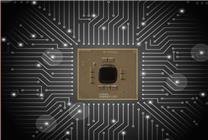Revolutionizing Education: The Launch of China’s First AI Classroom
- Beijing No. 20 Middle School introduces the nation’s first AI classroom aimed at enhancing primary and secondary education.
- The classroom features cutting-edge technology and a curriculum aligned with national guidelines on AI education.
- Zhaoxin and Lenovo Kaitian collaborate to provide a seamless, adaptive learning environment for students.
On October 22, the educational landscape in China witnessed a significant transformation with the unveiling of the nation’s first AI classroom, located at Beijing No. 20 Middle School. This initiative marks a crucial step in integrating advanced technology into primary and secondary education.
The AI classroom is powered by a collaboration between Zhaoxin and Lenovo Kaitian, featuring dozens of integrated cloud desks embedded with Xinchuang PCs and high-performance workstations. The innovative design of the cloud desks allows screens to be concealed within the desktop, facilitating rapid deployment and flexible resource management tailored to diverse teaching needs. This versatility enables the classroom to transition seamlessly into a theoretical teaching space, group practice room, or personal exploration electronic classroom.
Equipped with robust workstation capabilities, this classroom empowers students to engage in AI model training and agent development simultaneously. This hands-on approach fosters a deeper understanding of AI principles while promoting collaborative learning experiences.
The curriculum embedded within the classroom strictly adheres to the “General Education Guidelines for Artificial Intelligence in Primary and Secondary Schools (2025 Edition).” This comprehensive system guides students through the essential stages of AI literacy—from foundational understanding to advanced interdisciplinary innovation skills. The goal is to provide a systematic and incremental growth path for students to master AI competencies.
In their inaugural practical course, students took part in building a Peking Opera knowledge intelligent agent. This engaging project not only allowed them to create a custom knowledge base but also integrated machine vision models to complete the process of image recognition, knowledge explanation, and speech output. The intelligent agent supports multilingual explanations and personalized content design, enhancing the learning experience.
The drive for AI integration in education stems from its potential as a strategic technology that can lead to both technological revolution and industrial transformation. By incorporating AI education during foundational schooling, China aims to cultivate a new generation equipped with essential AI skills, ultimately fostering self-reliance in scientific and technological advancements.
While continually enhancing their x86 processors, Zhaoxin actively collaborates with various stakeholders, including operating systems, cloud services, and application software developers. This partnership aims to create impactful educational solutions that cater to essential scenarios in the education sector, encompassing smart campuses, classrooms, and audiovisual education.
Among these solutions are a comprehensive educational data management platform, administrative services, campus security systems, Xinchuang laboratories, and interactive teaching technologies. With an emphasis on usability, these solutions are designed to allow machines to be “ready to use after power-on,” peripherals to be “plug and play,” and software to be “available whenever needed.”
Based on Zhaoxin technology, Lenovo Kaitian has developed a range of products—including laptops, desktops, all-in-one computers, and workstations—all fully adapted to domestic education software and capable of deploying local AI models. This integration ensures that students experience state-of-the-art technology in their educational journey.
The collaborative solutions of Zhaoxin and Lenovo Kaitian have already found widespread application in various educational institutions across China, reinforcing the importance of technology in modern classrooms. This pioneering AI classroom is not just an innovative space but a model for the future of education, enabling students to thrive in an increasingly digital world.
As education systems evolve, the role of AI will continue to expand, fostering environments that are not only technologically advanced but also conducive to comprehensive learning. With initiatives like the AI classroom at Beijing No. 20 Middle School, the potential of education in the era of AI is just beginning to unfold.








